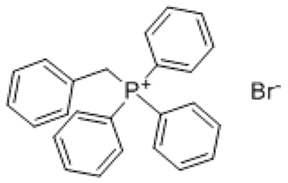2 5-Difluoro benzaldehyde(CAS# 2646-90-4)
| Hazard Symbols | Xi – Irritant |
| Risk Codes | 36/37/38 – Irritating to eyes, respiratory system and skin. |
| Safety Description | S26 – In case of contact with eyes, rinse immediately with plenty of water and seek medical advice. S36 – Wear suitable protective clothing. S37/39 – Wear suitable gloves and eye/face protection S36/37 – Wear suitable protective clothing and gloves. |
| UN IDs | UN 1989 3/PG 3 |
| WGK Germany | 3 |
| HS Code | 29130000 |
| Hazard Note | Irritant |
| Hazard Class | 3.2 |
| Packing Group | III |
Introduction
2,5-Difluorobenzaldehyde. The following is an introduction to its nature, use, manufacturing methods and safety information:
Quality:
2,5-Difluorobenzaldehyde is a colorless to light yellow liquid with a strong burn mark, pungent odor at room temperature. It is insoluble in water but can be soluble in organic solvents such as ethanol, toluene, etc.
Use:
2,5-Difluorobenzaldehyde has a wide range of applications in organic synthesis. It can be used as a precursor for the synthesis of aromatic compounds, paraphthalenedione derivatives, and bioactive molecules. It can also be used in the synthesis of organometallic complexes, high-performance coatings and dyes.
Method:
2,5-difluorobenzaldehyde can be prepared by the reaction of benzaldehyde and hydrogen fluoride. This reaction is usually carried out under acidic conditions and can be achieved by using hydrofluoric acid as a source of hydrogen fluoride.
Safety Information:
Necessary precautions should be taken when handling 2,5-difluorobenzaldehyde. It has irritants to the skin, eyes and respiratory tract. Chemical protective glasses, gloves and protective clothing should be worn and direct contact should be avoided. If it gets into your eyes or skin, rinse immediately with plenty of water and seek medical attention as soon as possible. During operation, it should be kept away from fire sources and avoid smoke and vapors to avoid fire and explosion.
This is a brief introduction to the properties, uses, preparation methods and safety information of 2,5-difluorobenzaldehyde. If needed, ensure that you understand and follow the appropriate laboratory safety regulations and guidance prior to handling or use.








